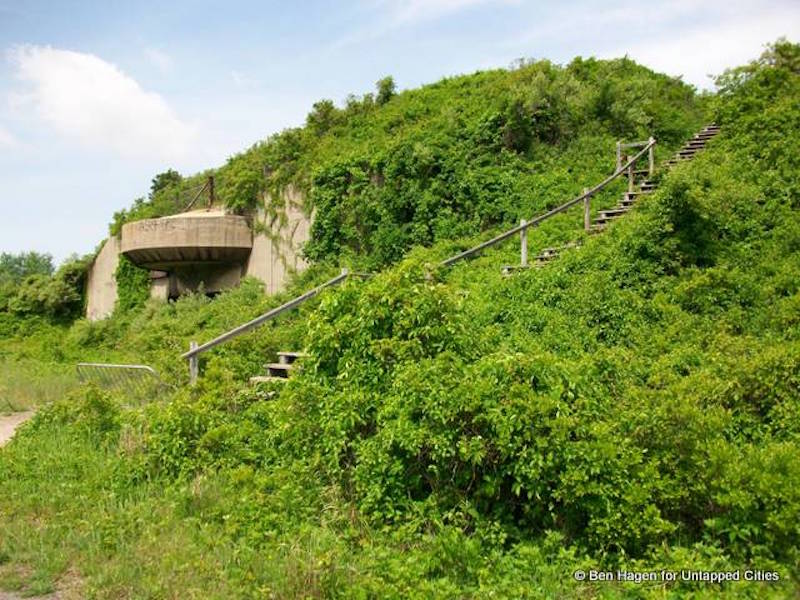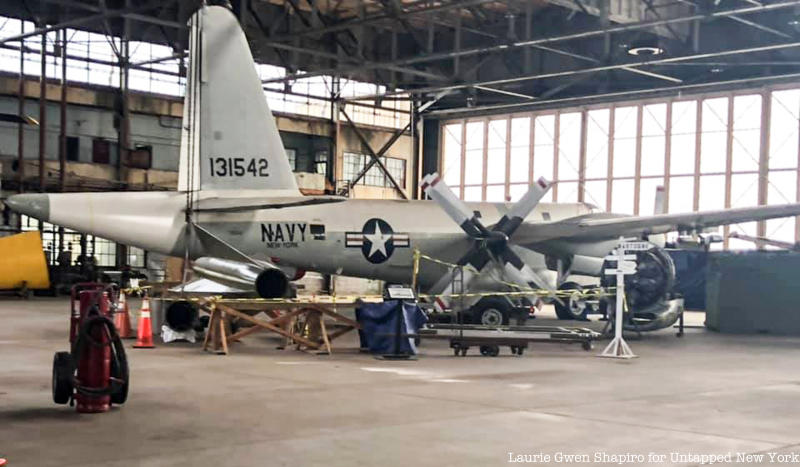4. Fort Tilden

This fort is one of the many coastal defense structures found in the Gateway National Recreation Area. Fort Tilden was initially named “Camp Rockaway Beach” when it first went into service in 1917. The installation was decommissioned by the U.S. Army in 1995, and throughout its time it served as an army reserve post and even as a Nike Ajax missile launch site during the Cold War.
What you’ll now find is that a lot of the old batteries and storage spaces for the equipment and ammunition have been completely overgrown by the brush of the maritime forest. The land has become important to the NPS in their efforts to protect the nesting grounds of the threatened Piping Plover. Signs and taped areas are marked out along the beach to discourage visitors from walking over nests and destroying the birds’ eggs. The same measures are taken to protect the species of Common tern and least tern that nest in Fort Tilden, which are also threatened in New York State.
A lot of the structures are now covered in graffiti and are of course vacant, but the tops of a few of the batteries have great lookout points. Battery Kessler and Battery East offer a fantastic view of the entire Rockaway peninsula, the Atlantic Ocean, Coney Island, Staten Island, and Manhattan in the distance. To think that these installations once housed tanks, anti-aircraft guns, and even nuclear missiles gives this location every bit of intrigue.
5. Floyd Bennett Field

If you’re a fan of aviation history, this former airfield in South Brooklyn would be a great site to visit in the Gateway National Recreation Area. Completed in the 1930s, the park was named after the aviator Floyd Bennett, who became the first pilot to fly directly over the North Pole. Although the airfield was initially built to handle commercial flights, its most important uses were during World War II and in the years following the Cold War when it served as an army reserve. The hangars and aircraft at Floyd Bennett take visitors back in time to the mid-20th century.
In one of the most productive periods of aviation in the 1930s, the airfield played a significant role in the overall development of the industry. It hosted a number of record-breaking flights, including some transcontinental speed records and some of the very first transatlantic flights of the era. It was convenient for most pilots and airline companies because of its location near the Atlantic and its lack of geographic obstacles.
Floyd Bennett Field has hiking trails, kayak portage spots, restored airplanes, an archery range, an “Ecology Village,” a racetrack for remote-controlled cars, and the only specifically designated camping ground in all of New York City. Plenty of people also come out to the field to fly their RC planes along the runways, which are also open to the public for cycling and hiking. There are also abandoned sections to explore.





